Home Reviews ,,,,, The oximeter is a tool used mainly by health personnel (doctors and nurses) and by non-medical personnel assigned to rescue, but thanks to Mpow it is now within everyone's reach, becoming a valid ally also in the home. We tried it for a few days, also comparing it with professional tools to verify the accuracy of the measurements and it is passed with flying colors: it costs very little and even fits in your pocket, allowing you to carry it with you even during outdoor workouts.
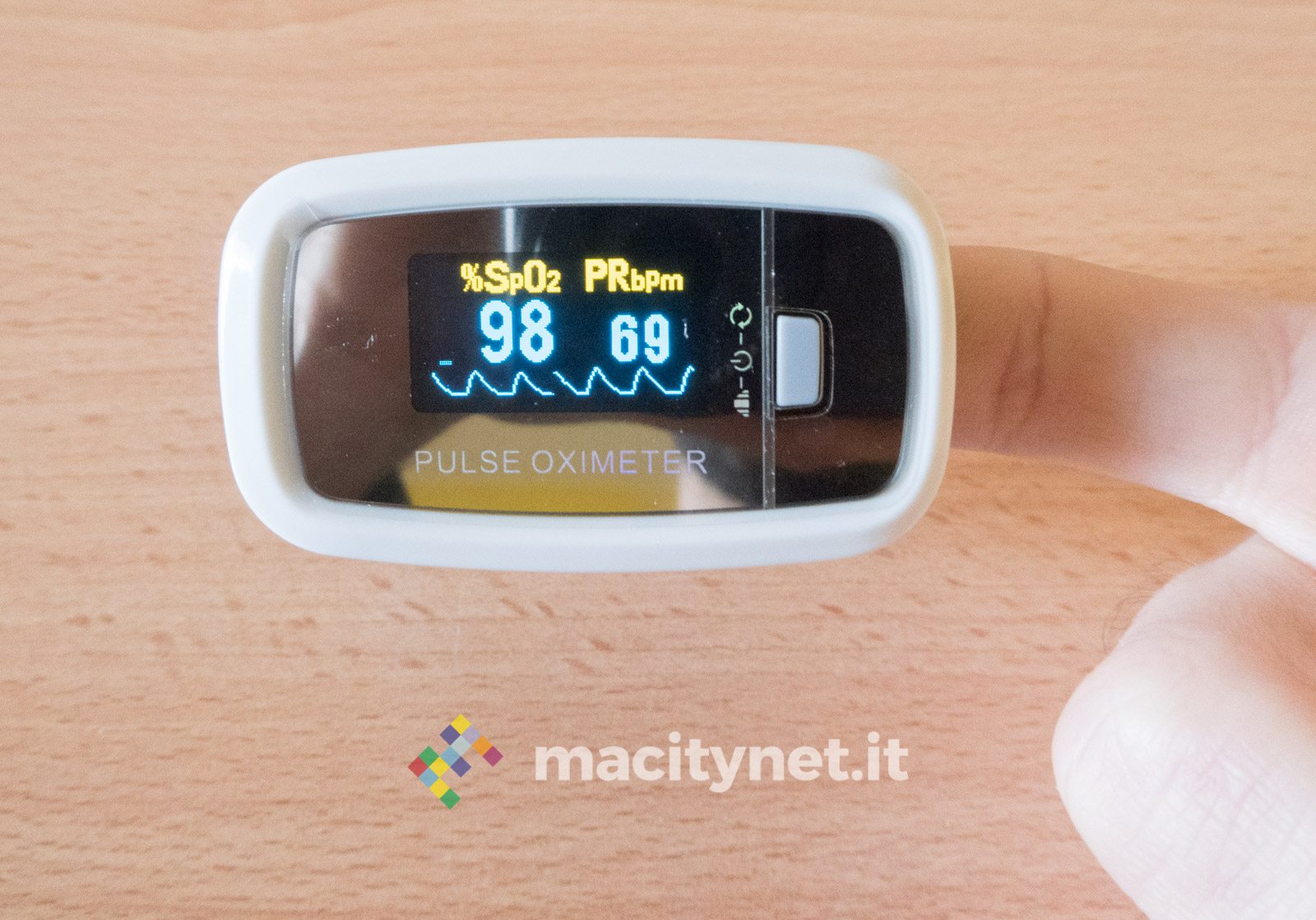
Pulse oximeter, what it does and why it is important
The oximeter is a medical instrument that basically allows you to measure the amount of hemoglobin bound in the blood in a non-invasive way. It should be noted immediately that any oximeter does not allow to establish with which gas the hemoglobin is linked, but only the percentage of hemoglobin bound: normally hemoglobin binds oxygen, therefore in essence it allows to obtain an estimate of the quantity of oxygen present in the blood.
It is generally used in hospital wards and on emergency vehicles as it is a non-invasive device (i.e. it is not necessary to perform maneuvers or analyzes that penetrate the patient's tissues) and is early in recognizing hypoxia compared to cyanosis conditions, allowing a diagnosis of oxygen desaturation before serious complications. Hypoxemia is also typical of various diseases: airway obstructions, anemia, acute respiratory distress syndrome, COPD, emphysema, interstitial lung disease, pneumonia, pneumothorax, pulmonary edema, pulmonary embolism, pulmonary fibrosis and obstructive apnea syndrome during the sleep. Altitude and anemia are also associated with hypoxia; for example between 5000 and 5500 meters of altitude, oxygen saturation drops to around 85%.
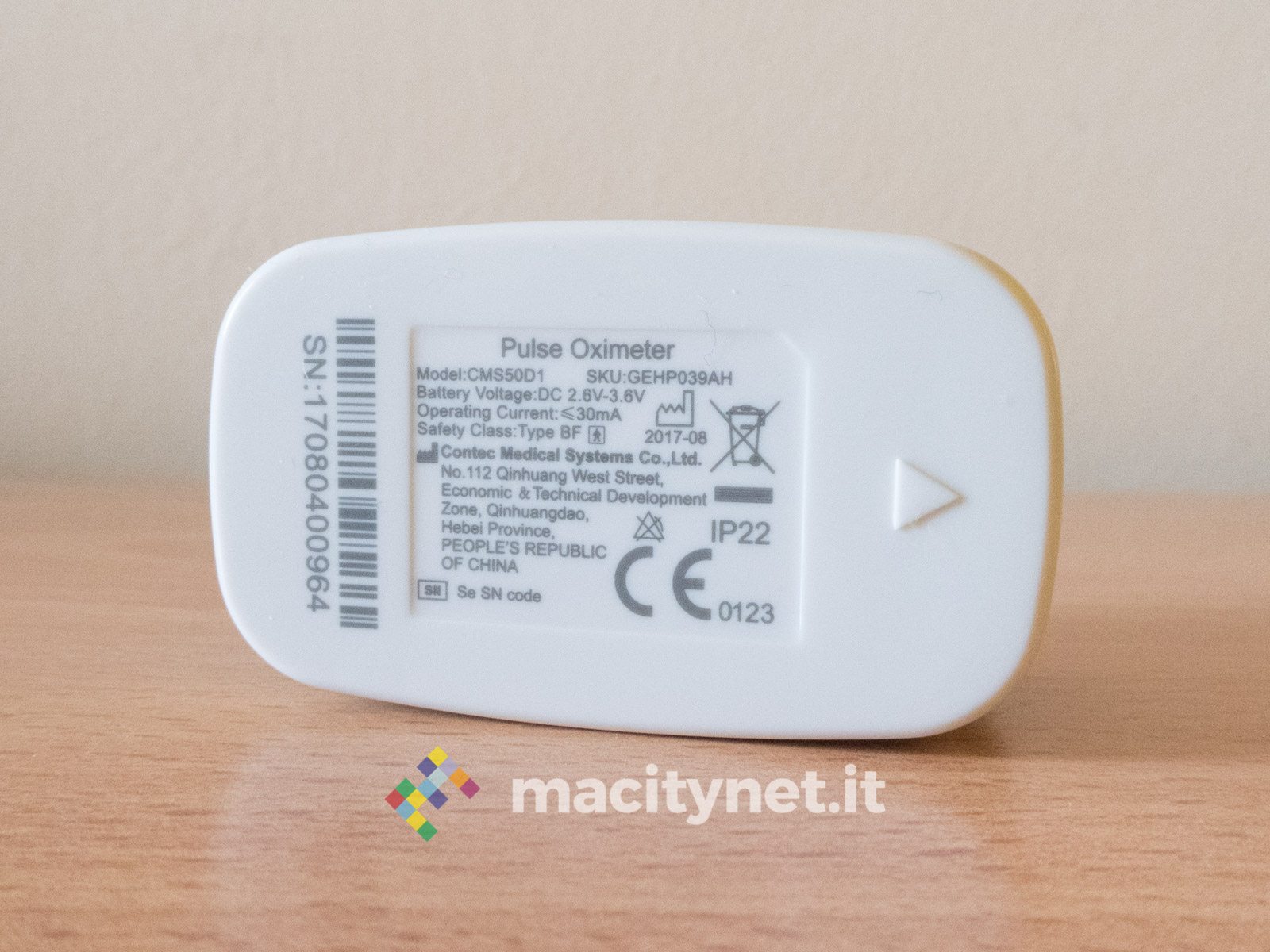
Mpow pulse oximeter, how it's made
In the sales package we find the oximeter, a lace to hang it around the neck, a carrying case, two AAA batteries for power supply and the instruction manual. Like others of its kind, it consists of a probe that performs the measurement and a unit that calculates and displays the measurement result. In the specific case, it is a “caliper” that is applied to the finger where on one side, thanks to a screen, the measurement is displayed.
The device is small (6 x 3.5 x 3.2 centimeters) and, including the lanyard and batteries, weighs 60 grams. It is completely made of high quality plastic, apparently solid and durable over time. The inner layer, on the other hand, is made of rubber, perfect for avoiding unwanted finger movements during measurement. There is only one button that allows you to turn on the oximeter and customize the information shown on the display: during use it is in fact possible to press the button to rotate the values shown on the screen, so as to obtain the right orientation from any side you try to read the display.
It is sufficient to open the pliers with one hand and preferably insert the index or middle finger of the other hand with the fingertip facing upwards, from the side where the screen is located so to speak (the nail will therefore be facing the opposite side) . Once powered on, you need to wait a few seconds to start displaying saturation (bound hemoglobin) and heart rate.
Without delving too deeply into the technical and scientific functioning of the device, essentially the clamp is composed of two diodes that generate beams of light in the red and infrared range (nail side) and a photocell that receives the light after the beams have crossed the patient's skin and circulation (fingertip side). The oxygenated hemoglobin, characteristically, absorbs light in those specific wavelengths: knowing the initial and final amount of light, the equipment is thus able to calculate the oxygen saturation in the patient (indicated with the abbreviation SpO2).
Once the measurement is complete, simply remove your finger: it will be immediately interrupted and after a few seconds the oximeter will automatically switch off.

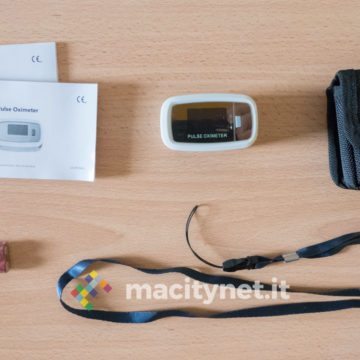
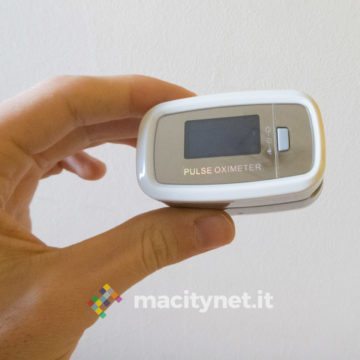
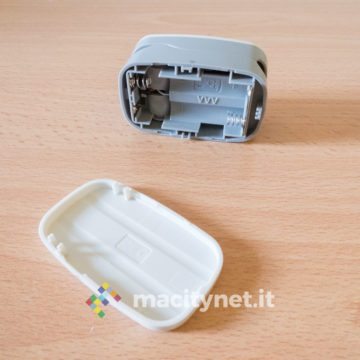
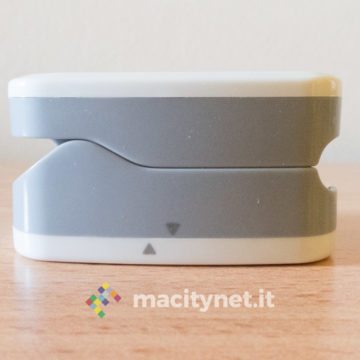
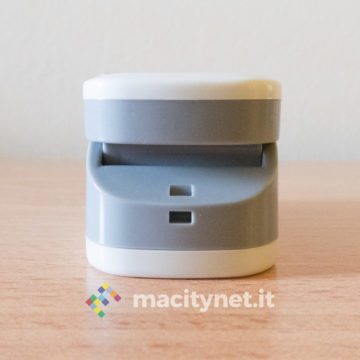
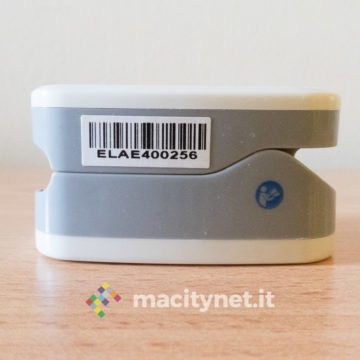
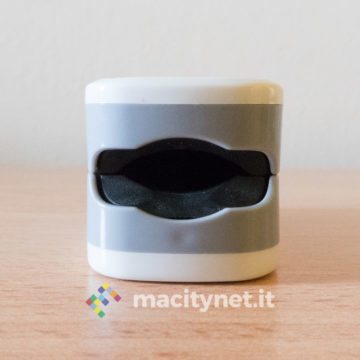
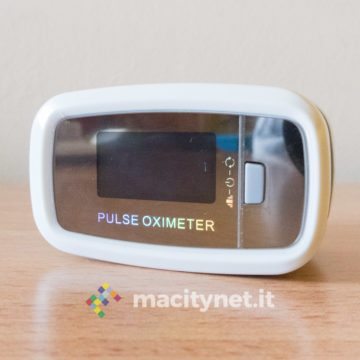
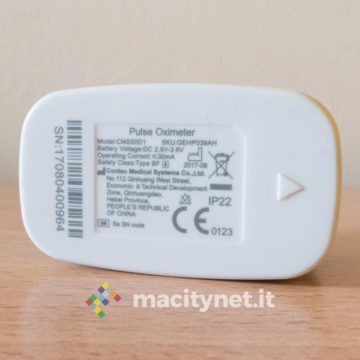
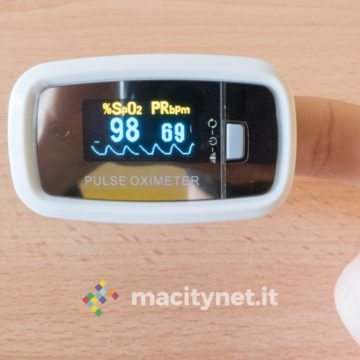
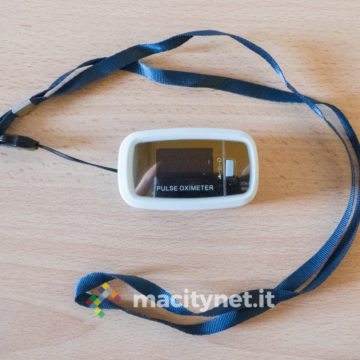
Field test
We did some tests by comparing the values with more than one professional medical instrument, finding that the values measured were practically the same. It has thus proved to be a tool to be completely relied upon, as long as certain conditions of use are respected. As well as any other oximeter, in fact, to avoid errors in the reading, in addition to inserting the finger correctly in the clamp, it is important to avoid nail polish which could distort the results as it shields the wavelengths generated by the probe and it is necessary to maintain arm firmly during measurement. Finally, it should not be used on the same arm where the pressure measurement is being carried out.
As for the measurements, with values above 96% you can rest assured: these are considered normal values of O2. Between 95 and 93% are indicative of possible oxygenation problems, or a partial absence of oxygen (mild hypoxia); between 92 and 90% are indicative of insufficient oxygenation and it is advisable to undergo blood gas analysis (EGA), while below 90% they are not physiological and indicate severe oxygen deficiency (severe hypoxia), where it is important to undergo a blood gas analysis.
Finally, it is good to keep in mind that the value of 100 measured “in ambient air”, ie without artificial oxygen administration, can be a symptom of hyperventilation, which can be due, for example, to panic attacks. Sometimes even values around 90% can be normal: this is the case of people with chronic obstructive pulmonary disease (COPD).
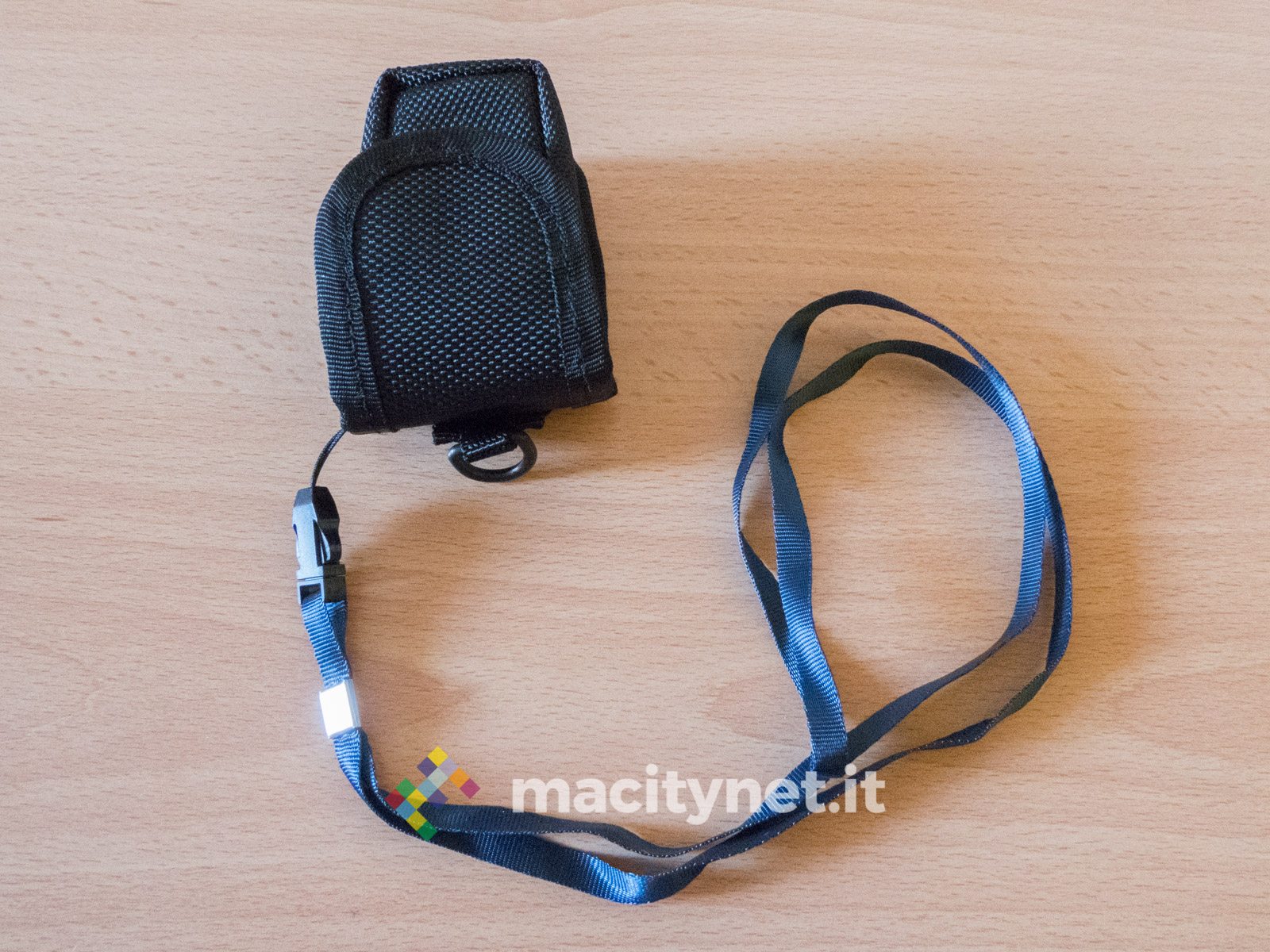
Conclusions
The device is not designed for continuous monitoring, therefore it does not replace what we find for example in the operating room: it is rather designed for home use and on users over the age of 16 and is suitable for providing additional information to the your doctor.
Retail price
Mpow's pulse oximeter is on sale on Amazon for only 23.99 euros.
,,





